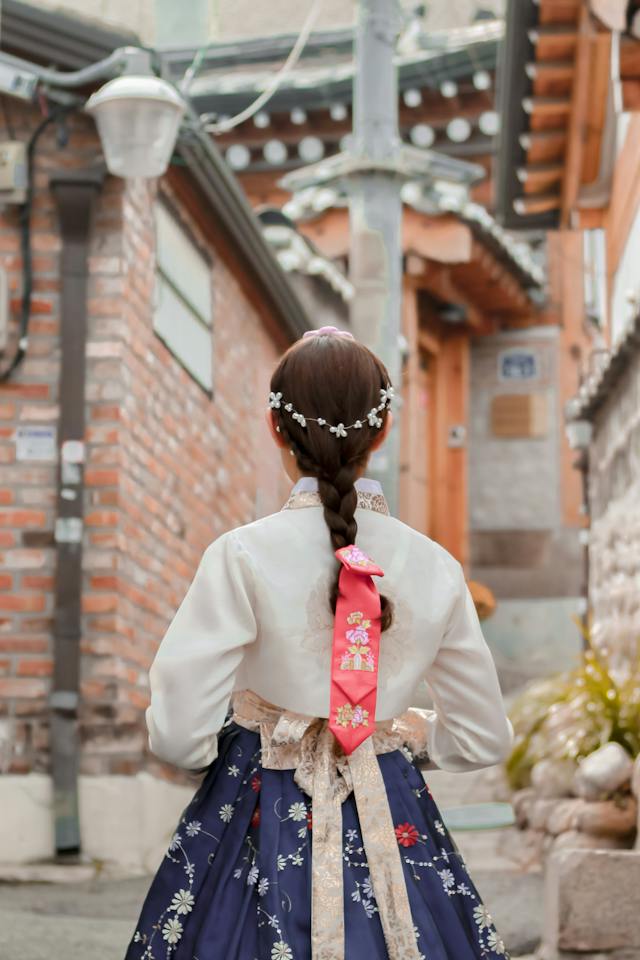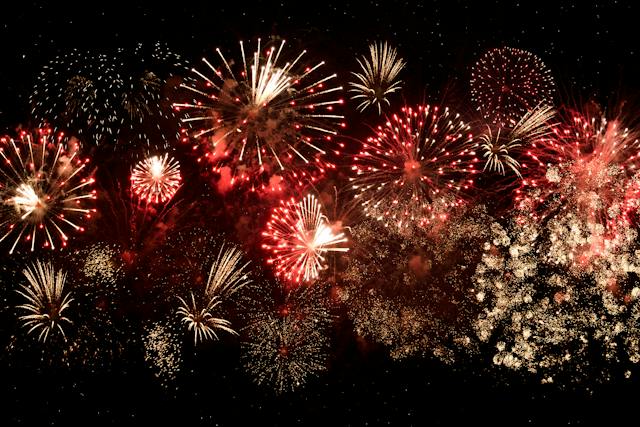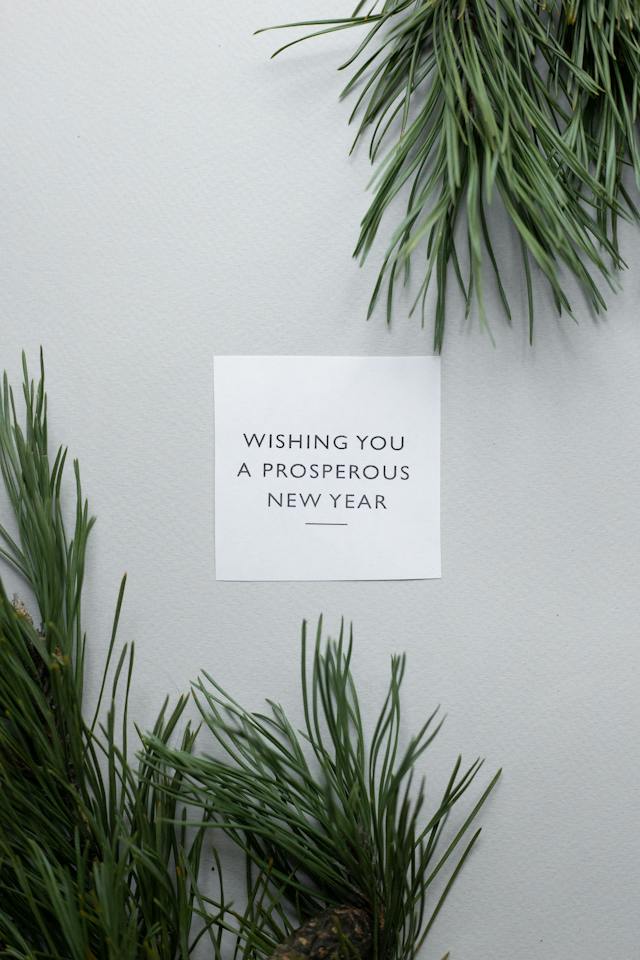In Korea, New Year greetings are a significant aspect of cultural expression. Here’s a guide to say Happy New Year in Korean including 5 Korean phrases for New Year for New Year greetings in Korea.
New Year in Korea
In Korea, the celebration of the New Year is a vibrant affair that unfolds in two distinct waves – the first of January and the Lunar New Year, also known as “Seollal.” Let’s explore the unique characteristics of each celebration.
January 1st – Western New Year
Similar to many countries around the world, Koreans welcome the first day of January as the beginning of the Gregorian calendar year, so you can still say Korean New Year greeting like ‘Saehae bok mani badeuseyo’ to people. Countdowns, fireworks, and festive gatherings mark the transition from the old year to the new. It is a time for reflection, setting resolutions, and sharing joy with family and friends.
Korean New Year (Seollal)
Seollal is a major traditional holiday celebrated on the first day of the lunar calendar, usually falling between late January and mid-February. It holds deep cultural significance, emphasizing family reunions, ancestral rites, and honoring elders. Traditional customs include Sebae (New Year’s bowing), special foods like Tteokguk (rice cake soup), and various celebratory activities. People often travel to their hometowns to be with family during this time, creating a significant migration across the country.
The coexistence of these two New Year celebrations reflects Korea’s unique blend of modernity and tradition. While the Western New Year is more globally recognized and shares similarities with celebrations worldwide, Seollal provides a glimpse into the rich tapestry of Korean cultural heritage.
Koreans often engage in a dual celebration, cherishing the countdown festivities on January 1st and then embracing the deeper cultural rituals and traditions of Seollal a few weeks later. Both occasions emphasize the importance of family, renewal, and hope for a prosperous and harmonious year ahead. So, in Korea, the New Year is not just a one-day affair but a multifaceted celebration that spans the entire month, blending contemporary and ancient customs in a uniquely Korean way.
To learn more about Seollal, check out my blog post about when is Korean New Year and what to eat during the New Year in Korea.
5 Korean phrases for New Year – New Year greetings in Korea
How to say Happy New Year in Korean
In Korea, New Year greetings are a significant aspect of cultural expression, reflecting respect and good wishes. Here’s a guide to the various ways people exchange pleasantries during this festive season.
1. May you receive many blessings in the New Year.
Korean phrase: 새해 복 많이 받으세요
Pronunciation: Saehae bok mani badeuseyo
Usage: A universally well-received and warm greeting, suitable for both personal and professional settings. This is the quintessential and widely used New Year greeting in Korea. It expresses a heartfelt wish for the recipient to be blessed with good fortune and prosperity throughout the coming year. This phrase can be considered a common New Year phrase like ‘Happy New Year’ in Korea.
2. Be happy in the New Year too.
Korean phrase: 새해에도 행복하세요.
Pronunciation: Saehaeedo haengbokhaseyo
Usage: Expressing a wish for ongoing happiness and well-being in the coming year. Conveys a warm wish for the recipient to continue experiencing happiness and joy in the upcoming year.
3. Wishing you a healthy and happy year.
Korean phrase: 건강하고 행복한 한 해 되세요.
Pronunciation: Geonganghago haengbokhan han hae doeseyo
Usage: Emphasizes the importance of good health and happiness as key components of a fulfilling year ahead.
4. May all your wishes come true throughout the year
Korean phrase: 올 한 해 동안 모든 소원이 이뤄지길 바랍니다
Pronunciation: Ol han hae dongan modeun sowoni irwojigil barabnida
Usage: Conveying a broader and heartfelt wish for the fulfillment of all the recipient’s desires.
5. Wishing you more achievements and good luck in the New Year
Korean phrase: 새해에는 더 많은 성취와 행운이 있기를 바랍니다
Pronunciation: Saehaeneun deo manheun seongchowa haenguni itkireul barabnida
Usage: Particularly suitable for colleagues, acquaintances, or friends, expressing hopes for success and good fortune in various endeavors.
Remember, the tone and formality of your greeting may vary depending on the relationship and context. Whether you’re sending messages digitally or delivering them in person, these greetings will surely help you start the New Year in Korea on a warm and positive note.
Korean New Year vocabulary
Here are some of the useful Korean New Year vocabulary to enhance your understanding of the language and its cultural context.
1. 새해 (Saehae) – New Year
Pronunciation: Sah-hae
This word represents the concept of the New Year itself. Koreans use it to refer to both the Western New Year on January 1st and the Lunar New Year (Seollal).
2. 복 (Bok) – Blessings
Pronunciation: Bok
A crucial word during the New Year, “복” encapsulates the wish for blessings and good fortune. You’ll often hear it in phrases like “새해 복 많이 받으세요” (Saehae bok mani badeuseyo) – “May you receive many blessings in the New Year.”
3. 받다 (Batda) – To Receive
Pronunciation: Bat-da
Used in the common New Year’s greeting, “받으세요” (Badeuseyo), which means “receive.” When combined with “복” (Bok), it creates the heartfelt wish for receiving blessings in the coming year.
4. 설날 (Seollal) – Korean Lunar New Year
Pronunciation: Suhl-nal
The Lunar New Year, celebrated on the first day of the lunar calendar. It involves various traditional customs, including Sebae (New Year’s bowing), and special foods like Tteokguk (rice cake soup).
5. 세배 (Sebae) – New Year’s Bowing Ritual
Pronunciation: Se-bae
A customary bowing ritual performed during Seollal to show respect to elders. Understanding “세배” is crucial for participating in traditional New Year activities.
Learning these Korean New Year vocabulary words will not only help you navigate the festive season but also deepen your appreciation for the cultural nuances embedded in the language. Practice using these words and phrases to convey warm wishes and actively participate in the joyous atmosphere of Korean New Year celebrations.
Cultural Nuances in New Year Greetings
1. Bowing and Respect
Sebae (세배)
In Korea, the tradition of bowing, known as “Sebae,” is an integral part of New Year’s greetings. Younger individuals bow to their elders as a sign of respect, and elders, in turn, offer blessings and good wishes.
Bowing Etiquette
- Younger to Older: During Sebae, younger individuals bow to their elders. The depth of the bow can vary, with a deeper bow signifying a higher level of respect. It is a symbolic way of showing deference and acknowledging the wisdom and experience of those who came before.
- Formal Posture: Proper posture is crucial during Sebae. The person bowing stands with their hands placed on the floor, palms facing up, and forehead touching the ground. This formal posture reflects humility and sincerity in conveying well-wishes for the New Year.
Reciprocal Blessings
- Elders’ Response: In response to the bow, elders offer blessings and words of wisdom. This reciprocal exchange fosters a sense of harmony and connection between generations. Elders may wish for good health, success, and happiness, creating a warm and familial atmosphere.
- Generational Connection: Sebae strengthens the bond between generations and emphasizes the importance of family ties. It is not merely a gesture but a shared cultural experience that reinforces the values of respect, filial piety, and continuity of tradition.
Social and Workplace Settings
- Beyond Family: While Sebae is prominently observed within families, it extends to social and workplace settings as well. In professional settings, employees may bow to their superiors as a gesture of respect and goodwill for the upcoming year.
- Symbol of Unity: Sebae transcends individual relationships; it symbolizes unity and collective well-wishing for the community. In larger gatherings or community events, participants may engage in group bowing ceremonies, fostering a sense of togetherness.
Modern Adaptations
- Virtual Sebae: In the digital age, where physical distances may separate family members, virtual Sebae has become a thoughtful way to uphold traditions. Video calls or messages featuring a virtual bow maintain the essence of respect and connection.
- Respecting Personal Space: While the tradition remains strong, especially during Seollal, there is a growing awareness of personal space and individual preferences. Some individuals may prefer a nod of the head or a slight bow, adapting the tradition to modern sensibilities.
In essence, Sebae is not just a formality; it is a cultural cornerstone that encapsulates the essence of Korean New Year greetings. It weaves together generations, nurtures respect, and embodies the spirit of unity, making the act of bowing a profound and meaningful ritual during this joyous season.
2. Formality and Politeness
The level of formality in your greeting depends on the relationship. Politeness is highly valued, especially when addressing seniors or those in higher social positions. Using honorifics, such as “-세요” (-seyo), adds a respectful tone.
Relationship Dynamics
- Understanding Hierarchy: In Korean culture, hierarchical relationships play a crucial role in communication. The level of formality in your New Year greeting is intricately tied to the nature of your relationship with the recipient. Understanding the hierarchical structure is fundamental to crafting a culturally appropriate greeting.
- Seniors and Elders: When addressing seniors or elders, a higher level of formality is expected. It reflects a deep-seated cultural respect for age and experience. Failure to use the appropriate level of formality may be perceived as disrespectful.
Honorifics and Language Politeness:
- Honorifics (-세요): Adding the honorific suffix “-세요” (-seyo) to your greetings is a simple yet impactful way to convey respect. For example, instead of saying “새해 복 많이 받았으면 좋겠어” (Saehae bok mani badasseo johgesseo), which is informal, you can elevate the formality by saying “새해 복 많이 받으세요” (Saehae bok mani badeuseyo).
- Choosing the Right Verb Forms: Korean language features different verb forms that denote varying levels of politeness. The choice between informal, polite, or honorific verb forms depends on the relationship. For instance, using the polite form “합니다” (hamnida) instead of the informal “해” (hae) elevates the level of formality.
Social Settings and Workplace
- Professional Environments: In professional settings, maintaining a high level of formality is crucial. Colleagues and superiors generally expect a respectful tone in greetings and communication during the New Year. Proper titles and honorifics contribute to a harmonious workplace culture.
- Social Gatherings: During social gatherings, especially those involving mixed-age groups, striking a balance between formality and friendliness is essential. It showcases cultural awareness and adaptability to diverse settings.
Tone and Expression
Warmth Within Formality: It’s important to note that formality doesn’t imply stiffness. Even in formal greetings, Koreans often infuse warmth and sincerity. Expressions of goodwill and genuine wishes for the recipient’s well-being are always welcomed.
Customizing Based on Relationship: Tailoring the level of formality based on the closeness of your relationship is a subtle yet meaningful gesture. For close friends or peers, a slightly less formal tone may be appropriate, while maintaining the essential elements of respect.
Non-Verbal Cues
- Body Language: Beyond spoken language, body language and gestures also contribute to the overall tone of formality. Maintaining eye contact, offering a slight bow, or using both hands when presenting a gift are non-verbal cues that complement verbal expressions.
- Cultural Sensitivity: Cultural sensitivity plays a pivotal role. Understanding the nuances of formality helps avoid unintended misunderstandings and fosters positive interactions during the New Year festivities.
By navigating the delicate balance of formality and politeness in your New Year greetings, you not only demonstrate cultural awareness but also showcase a genuine respect for the traditions and values embedded in Korean society. This thoughtful approach enhances the quality of your interactions and contributes to the overall warmth of the New Year celebration.
3. Traditional Customs
Koreans often include references to cultural symbols like dragons, mountains, and rivers in their New Year greetings, adding layers of meaning and tradition to their wishes.
Symbolism in New Year Greetings
- Dragons: The dragon, or “용” (yong) in Korean, holds significant cultural symbolism. Representing strength, prosperity, and good fortune, incorporating dragons into New Year greetings is a way to wish for a powerful and auspicious year ahead.
- Mountains and Rivers: References to mountains (산 – san) and rivers (강 – gang) symbolize stability, longevity, and the unyielding flow of time. Wishing someone a year filled with the steadfastness of mountains and the continuous flow of rivers signifies a wish for enduring success and growth.
Natural Elements:
Elements of nature, such as trees, flowers, and the sun, are often included in greetings. They evoke the cyclical nature of life, renewal, and the changing seasons, aligning with the themes of a fresh start and rejuvenation that the New Year brings.
Incorporating Hanja Characters
- Hanja – Chinese Characters: Traditional New Year greetings may feature Hanja characters, adding an extra layer of depth and cultural richness. Hanja characters have meanings rooted in Chinese characters, contributing to the wishes’ historical and cultural significance.
- 고 (Go) – High and Elevated: Adding the character “고” (go) to phrases conveys wishes for elevated success, achievements, and aspirations. For example, “새해에 고조되길 바랍니다” (Saehae-e gojodoegil barabnida) expresses a desire for heightened success in the New Year.
- 평안 (Pyeong-an) – Peace and Tranquility: Incorporating “평안” (pyeong-an) in greetings wishes for peace and tranquility. For instance, “새해에 평안하길 바랍니다” (Saehae-e pyeong-anhagil barabnida) expresses a wish for a peaceful and serene New Year.
Proverbs and Poetic Language
사자성어 (Saja-seong-eo) – Four-Character Idioms: Including 사자성어, or four-character idioms, in New Year greetings adds a touch of literary and philosophical elegance. Phrases like “동고동락” (Dong-go dong-rak), meaning “to share joy and sorrow together,” encapsulate deeper cultural meanings.
Poetic Expressions: Poetic language is often used to convey wishes for the New Year. Expressions like “하늘에는 별이 많으니, 당신의 소망도 이루어지리라” (Haneul-eneun byeori manheuni, dangsin-ui somangdo irueojirira), meaning “As the sky is full of stars, may your wishes also come true,” add a poetic and uplifting tone.
Artistic Representations
- Calligraphy and Art: Traditional calligraphy, paintings, or illustrations featuring auspicious symbols are sometimes shared during the New Year. These artistic representations carry wishes for blessings, fortune, and success.
- Hanbok in Greetings: Depicting individuals in traditional Korean attire, known as hanbok, within greetings or illustrations emphasizes cultural heritage and reflects a wish for a year filled with traditional values and customs.
By understanding and incorporating these cultural symbols, characters, and poetic expressions into New Year greetings, you not only convey well-wishes but also immerse yourself in the rich tapestry of Korean traditions. These nuanced greetings resonate with deeper meanings, fostering a sense of cultural connection and appreciation during the festive season.
Sending Digital New Year Cards in Korea
1. Online Platforms
With the rise of technology, sending digital New Year cards has become popular. Various online platforms and messaging apps offer virtual cards that can be customized with personal messages.
Convenience and Efficiency
- Instant Delivery: One of the primary advantages of digital cards is instant delivery. Users can send their greetings with just a few clicks, ensuring that recipients receive the message promptly, even if they are miles away.
- Cost-Effective: Sending digital New Year cards is often a cost-effective option compared to traditional paper cards. There are typically no printing or postage costs involved, making it a budget-friendly alternative for individuals and businesses alike.
Environmental Considerations
- Eco-Friendly Approach: Opting for digital cards aligns with eco-conscious practices. By reducing the use of paper and minimizing waste, digital greetings contribute to a more environmentally friendly celebration of the New Year.
- Global Connectivity: For individuals with friends and family scattered around the globe, digital cards offer a seamless way to connect. Whether your loved ones are in Korea or on the other side of the world, digital greetings bridge the distance with a click.
Popular Platforms
- KakaoTalk: KakaoTalk, a widely used messaging app in Korea, provides features for creating and sending digital cards. Users can choose from a variety of New Year-themed stickers, templates, and designs to enhance their messages.
- Naver: Naver, a prominent online platform in Korea, offers customizable e-cards through its services. Users can select from a range of designs and incorporate traditional and cultural elements into their digital greetings.
In embracing the digital era, sending New Year greetings through online platforms offers a blend of convenience, personalization, and eco-friendly choices. As technology continues to advance, the art of digital card creation provides an exciting avenue for expressing warm wishes and maintaining meaningful connections during the festive season.
2. Incorporating Korean Themes
Choose cards that incorporate Korean cultural symbols or designs, such as the symbolic animal in the year (e.g. Blue Dragon for the year 2024), hanbok (traditional clothing), or hanji (traditional paper). This adds a touch of cultural significance to your digital greeting.
3. Personalized Messages
When sending digital cards, take the opportunity to include personalized messages in Korean, expressing your sincere wishes for the recipient’s well-being and success in the New Year.
Personalization Features
- Customizable Messages: Digital New Year cards allow for personalized messages, enabling senders to express their wishes in their own words. Whether crafting a heartfelt paragraph or keeping it concise, the flexibility enhances the sincerity of the greeting.
- Incorporating Multimedia: The dynamic nature of digital cards allows for the inclusion of multimedia elements. Senders can attach photos, videos, or even voice recordings to add a personal touch and make their New Year wishes more engaging.
4. Video Greetings
Consider recording a short video message in Korean, expressing your New Year wishes. This adds a personal touch and allows the recipient to hear your warm greetings directly.
By understanding the nuances of expressing good wishes in Korean, incorporating cultural elements, and embracing digital communication methods, you can fully immerse yourself in the rich tapestry of Korean New Year celebrations. Whether through traditional bows, formal greetings, or modern digital cards, the essence remains the same – the joy of extending well-wishes and connecting with others during this special time of the year.



